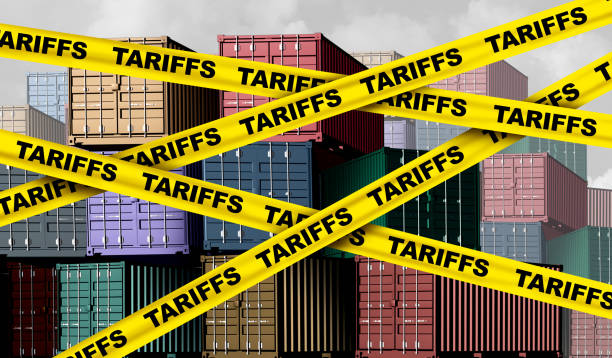

By Asmita - Aug 07, 2025
US imposes a 50% tariff on various Indian exports, prompting strategic reflection in India. Former official urges utilizing this as an opportunity for economic reforms. Key sectors like textiles and gems face high tariffs, potentially impacting competitiveness in the US market. India is urged to view this crisis as a catalyst for structural changes and prepare for potential GDP reduction and industry losses.

wildpixel via Istock
LATEST
The recent announcement of a 50% tariff by the United States on a broad spectrum of Indian exports has been met with intense debate and strategic reflection in India. Former G20 Sherpa and ex-NITI Aayog CEO Amitabh Kant described the action as a “once in a generation opportunity,” urging policymakers to use the external shock as a catalyst for far-reaching economic reforms rather than viewing it solely as a crisis. This unprecedented tariff escalation, implemented by the US under President Donald Trump, raises earlier duties from 25% to a punishing 50% on August 7, with the additional hike set to take effect in 21 days, reflecting tensions arising from India’s continued trade and energy partnerships with Russia.
Indian exports are now set to face considerable headwinds in the US market. Key affected sectors include textiles, gems and jewellery, steel, aluminium, organic chemicals, apparel, machinery, and furniture, which are all facing the maximum 50% tariff. Vehicles will incur a 26% duty, while petroleum products will face a lower rate of 6.9%. These increases gravely undermine the competitiveness of Indian products in one of their most significant export destinations, prompting exporters to reconsider their US-bound production and raising fears of declining market share, particularly against lower-cost competitors from Vietnam and Bangladesh.
Amitabh Kant’s message, however, is one of reform-oriented resolve rather than reactive dismay. He has emphasized that moments of crisis should be viewed as launchpads for overdue structural changes in the Indian economy. By “fully utilising” the challenge, he suggests that India can implement much-needed reform in trade policy, manufacturing practices, and export diversification. Such measures would not only insulate the nation against future external shocks but could also build greater resilience, attract global capital, and accelerate ease of doing business. Kant’s perspective reflects a broader sentiment among Indian thought leaders, who urge the country to seize this external pressure to drive home transformational change.
The broader macroeconomic implications of the new tariffs are substantial. Analysts have already begun to estimate potential downsides, with Morgan Stanley projecting up to a 0.8% reduction in India’s GDP in the next year if the tariffs remain in effect without mitigating policy actions. Key industries are expected to suffer significant losses: the seafood sector could lose up to ₹24,000 crore, and textile industries are slowing US-destined output. In light of these threats, the Indian government has signaled its commitment to protecting national interests and may respond by easing monetary policy, increasing capital expenditures, and accelerating efforts to diversify trade partnerships and sign new agreements with emerging markets.